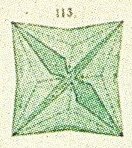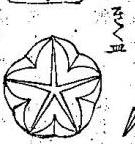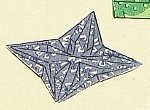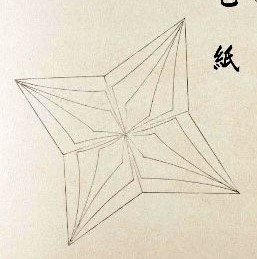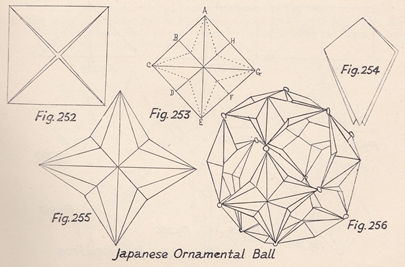| The Public Paperfolding History Project
Last updated 16/3/2025 x |
|||||||
| The Kikuzara / The Chrysanthemum Dish / The Japanese Ornamental Ball | |||||||
| This
page is being used to collect information about the
history of the origami design known as the Kikuzara or
Chrysanthemum Dish and its derivative, the Japanese
Ornamental Ball. Please contact me if you know any of
this information is incorrect or if you have any other
information that should be added. Thank you. ********** The Kikuzara / The Chrysanthemum Dish 1878 The Kikuzara is first pictured in 'Yochien Ombutsu No Zu', a publication of kindergarten material issued by the Tokyo Women's Normal School in 1878.
********** 1885 A five-sided version of the Kikuzara appears in 'Kindergarten Shoho' (Preliminary Kindergarten) by Iijima Hanjuro, which was copyrighted on October 4th Meiji 17 (1884) and published by Fukuda Senzo in August of Meiji 18 (1885),
********** 1892 The same five-sided version appears in 'Kani Shukogaku' (Simple Handicraft) by Tamotsu Shibue, which was published in Tokyo in 1892.
********** 1912 A drawing of what is probably intended to be the Kikuzara appears in a monozukushi-e print, by an unknown artist, but said to be from the Meiji era. I have temporarily assigned it the date of 1912, the last year of that era, pending the discovery of more accurate information.
********** 1935 'Origami Moyo, Book One', by Kawarazaki Kodo, which was published by Unsodo in Japan in 1935, contains a print showing the Kikuzara.
********** 1944 As 'Ruhishizara' in 'Origami Shuko' by Isao Honda, which was published by Sangyo Tosho Publishing Co. Ltd in 1944.
********** 1951 As 'Kikuzara' in 'Origami to Kirinuki' by Saburo Ueda, which was published by Kokkado in Tokyo, most probably in 1951.
********** 1965 This design also appears, interpreted as 'Christmas Tree Ornament', in 'The World of Origami' by Isao Honda, which was published in the USA by Japan Publications Trading Company in 1965.
********** 1967 As 'Christmas Ornament' in 'Origami Folding Fun: Kangaroo Book' by Isao Honda, which was published by Japan Publications Inc in Tokyo in 1967.
********** The Japanese Ornamental Ball 1937 Diagrams for the Japanese Ornamental Ball first appear in Margaret Campbell's 'Paper Toy Making', which was published by Sir Isaac Pitman and Sons Ltd in London, probably in 1937, although both the Foreword and Preface are dated 1936, which argues that the book was complete at that date.
According to the text 'The Japanese make six of these (blintzed bird bases), and sew them together at the points until a complete ball is made. ... A coloured bead finishes off each corner.' While there seems to be a clear connection between these two designs it is worth noting that the internal flaps of the modules are not developed here in the way they are in the Kikuzara. ********** |
|||||||
